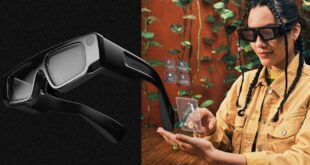A group of scientists restored vision in a monkey by using human stem cells to fix a hole in its retina. The research could open new doors for vision treatment in humans and other animals, too.
A new study published this month in Stem Cell Reports more thoroughly describes this amazing feat and shows a massive leap forward in the progress toward retinal transplantation. The researchers describe how they used human stem cells to create a patch, which they then used to fix the macular hole in the monkey’s eye.
Macular holes are a somewhat rare condition in which a hole develops in the very center of the retina. This part of the retina is vital to good central vision and a sharp focus, which means finding ways to restore vision in this area can be very tricky. One way that doctors try to treat this is by moving part of the outside of the retina to the center. However, this leads to blind spots in the peripheral vision, which creates a whole other set of problems.

Macular holes are especially tricky to treat, too, because only 90 percent of the cases are treatable with surgery, allowing doctors to restore vision within that central retina. These holes occur when the jelly-like substance inside the eye pulls away from the retina, causing tears and blurry vision. However, 10 percent of the cases leave patients struggling with blurred vision and even blind spots, as noted above.
So, how do you solve this problem without creating another? Well, that’s where patches made of stem cells come into play. By creating a patch of stem cells—which can theoretically be reprogrammed to become almost anything—researchers hope to be able to create a new way to repair the damaged retina that doesn’t require pulling away from other parts of the eye.
So far, the process has only been successful in monkeys. However, additional trials and human clinical trials could prove successful in other places, too. Scientists have made several breakthroughs in this particular field recently, with dormant retina cells even being used to drive vision restoration in recent research.
Source link
 meganwoolsey Home
meganwoolsey Home



